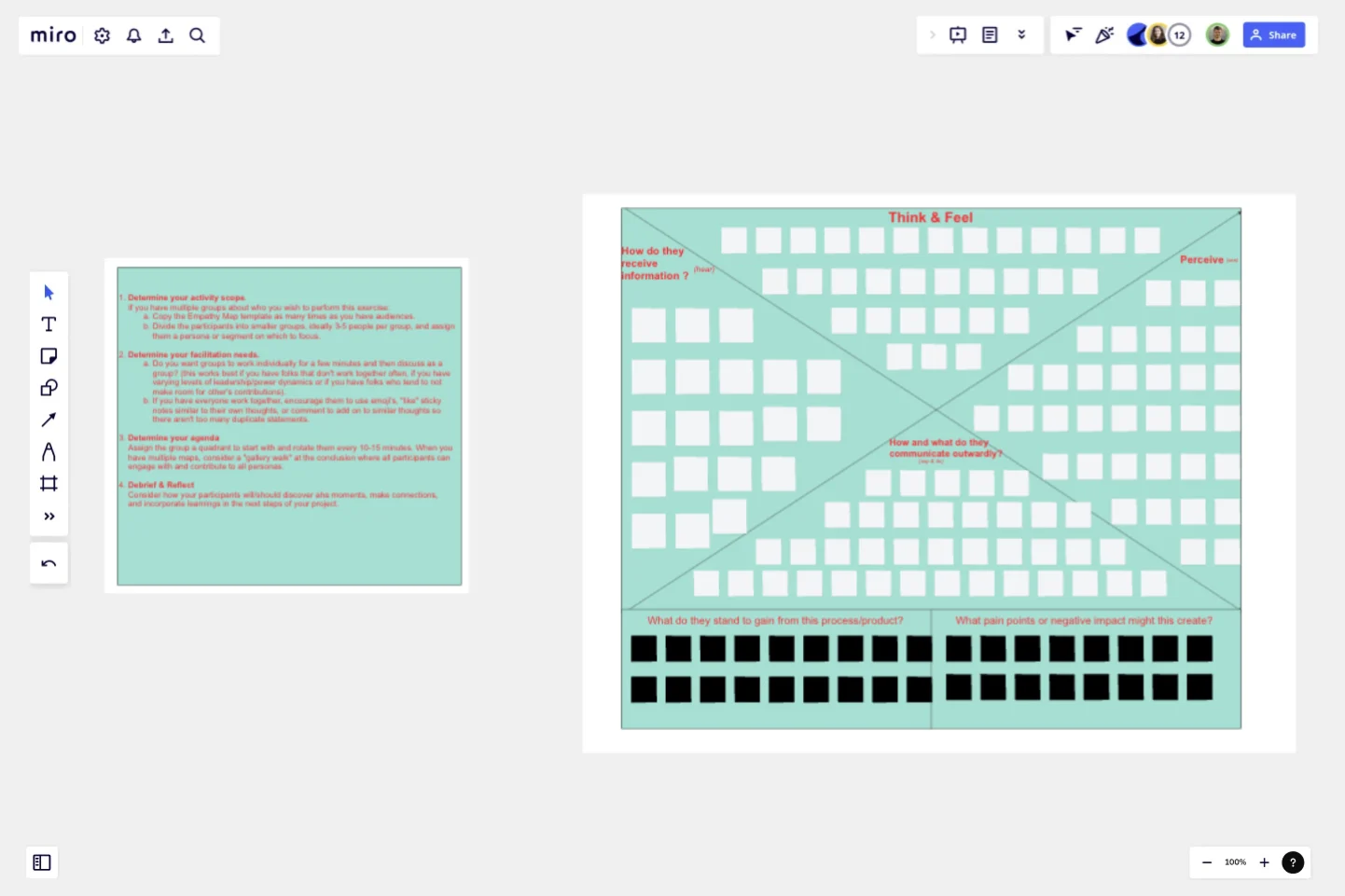Empathy Map by Back of the Napkin Consulting
Empathy maps are a tool used in design thinking and product management to help engineers and designers understand the lived experiences and needs of end users.
How do you bring voices in the room, safeguard their emotional experiences and create understanding between decision-makers and audiences impacted by those decisions when time and interest do not exist? How can equitable evaluation tenants be incorporated (and appreciated) while managing resources?
Enter the empathy map. While frameworks vary, the empathy map engages participants to envision what people:
Think & Feel
How do they receive information (Hear)
Perceive (See)
How and what do they communicate outwardly? (Say and do)
What they stand to gain and potential pain points from a project/project
This template was created by Back of the Napkin Consulting.
Get started with this template right now.
Empathy Map Pro
Works best for:
Market Research, Research & Design
Empathy Map Pro helps you dive deeper into understanding your users. By exploring their thoughts, feelings, and experiences, you can create more effective solutions tailored to their needs. This advanced template is perfect for product development teams aiming to enhance user satisfaction and drive innovation.
Empathy Map by Voltage Control
Works best for:
Market Research, Research & Design
Empathy Map 1-2 captures detailed user insights by focusing on their thoughts, feelings, and behaviors. This template helps you create user-centered products by ensuring you understand and address the real needs of your users.
Fresh Perspective Template
Works best for:
UX, Design, Design Thinking
The Fresh Perspective Template is a unique method that encourages you to gain a more comprehensive understanding of someone else's experiences by immersing yourself in their world. By stepping into their shoes, you gain first-hand insight into their joys and challenges. This approach not only enhances your empathy for others but also improves your decision-making skills as it allows you to see situations from a different point of view.
Design Review Template
Works best for:
Design
Constructive feedback is a valuable skill. The Design Review Template provides a structured approach for effective conversations. Critiques promote collaboration and drive improvement, inspiring all participants. It's an accessible way to involve people beyond your core team.
Cheat Sheet Template
To ensure quick and efficient understanding and usage of a product, many products come with a reference guide or cheat sheet. Similarly, when introducing an unfamiliar concept to new audiences, a cheat sheet can effectively communicate the key principles and main features. The idea is to treat the concept as a new product and create a concise and clear reference guide that explains its intended purpose and basic specifications in a simple and straightforward manner.
Tell a Great Story
Works best for:
Storyboard
Tell a great story with the Storyboard template. Visualize your narrative using images, notes, and descriptions to map out each scene. This template is perfect for filmmakers, content creators, and marketers looking to craft compelling stories. It helps you organize your thoughts, sequence your story elements, and ensure a cohesive flow. Whether you're planning a video, a marketing campaign, or a presentation, this tool makes storytelling easier and more effective.
